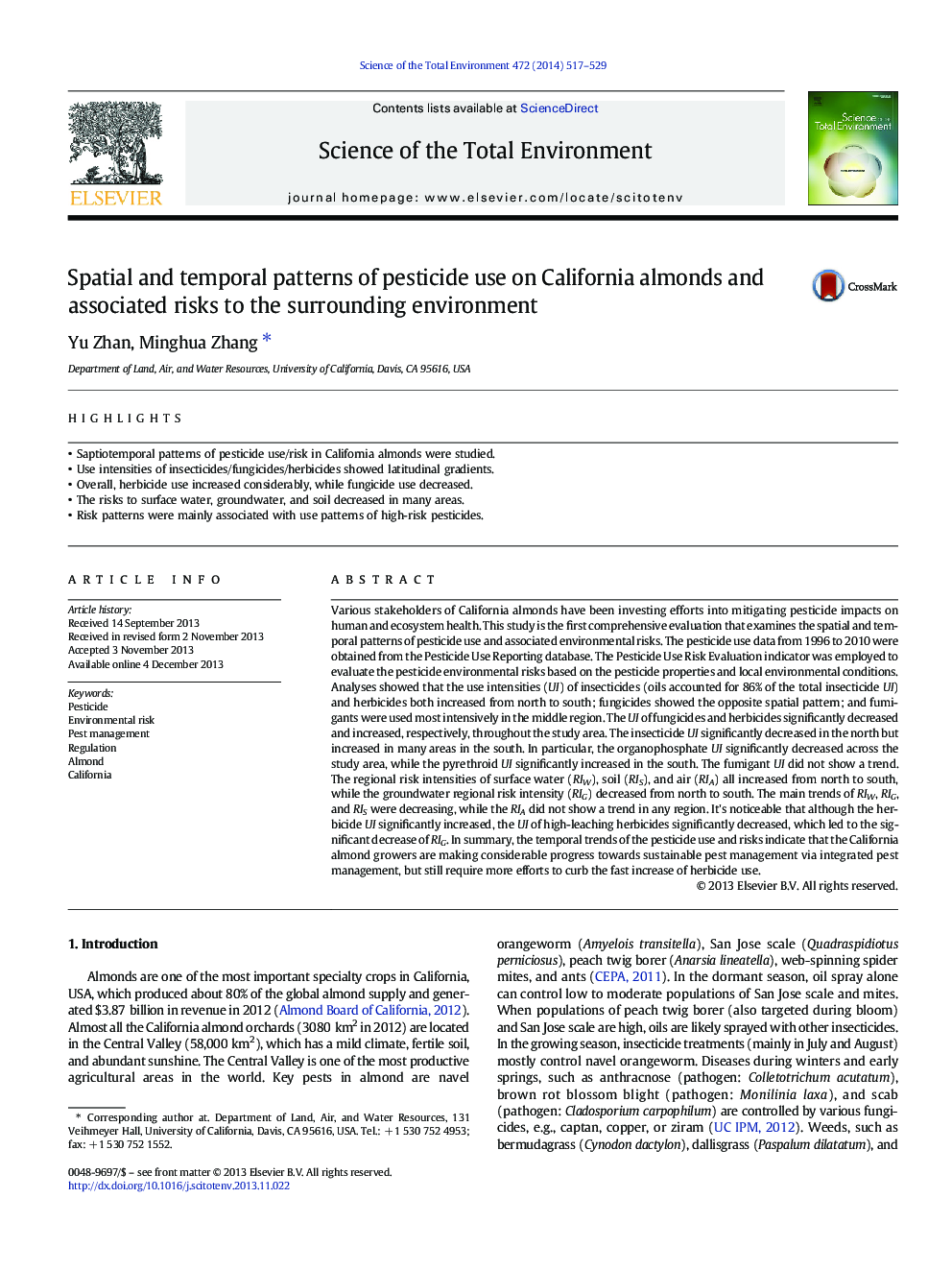| Article ID | Journal | Published Year | Pages | File Type |
|---|---|---|---|---|
| 6331186 | Science of The Total Environment | 2014 | 13 Pages |
Abstract
Various stakeholders of California almonds have been investing efforts into mitigating pesticide impacts on human and ecosystem health. This study is the first comprehensive evaluation that examines the spatial and temporal patterns of pesticide use and associated environmental risks. The pesticide use data from 1996 to 2010 were obtained from the Pesticide Use Reporting database. The Pesticide Use Risk Evaluation indicator was employed to evaluate the pesticide environmental risks based on the pesticide properties and local environmental conditions. Analyses showed that the use intensities (UI) of insecticides (oils accounted for 86% of the total insecticide UI) and herbicides both increased from north to south; fungicides showed the opposite spatial pattern; and fumigants were used most intensively in the middle region. The UI of fungicides and herbicides significantly decreased and increased, respectively, throughout the study area. The insecticide UI significantly decreased in the north but increased in many areas in the south. In particular, the organophosphate UI significantly decreased across the study area, while the pyrethroid UI significantly increased in the south. The fumigant UI did not show a trend. The regional risk intensities of surface water (RIW), soil (RIS), and air (RIA) all increased from north to south, while the groundwater regional risk intensity (RIG) decreased from north to south. The main trends of RIW, RIG, and RIS were decreasing, while the RIA did not show a trend in any region. It's noticeable that although the herbicide UI significantly increased, the UI of high-leaching herbicides significantly decreased, which led to the significant decrease of RIG. In summary, the temporal trends of the pesticide use and risks indicate that the California almond growers are making considerable progress towards sustainable pest management via integrated pest management, but still require more efforts to curb the fast increase of herbicide use.
Related Topics
Life Sciences
Environmental Science
Environmental Chemistry
Authors
Yu Zhan, Minghua Zhang,
